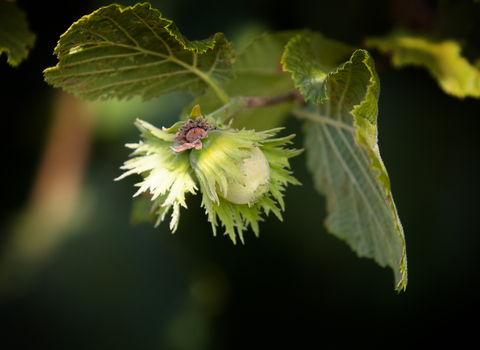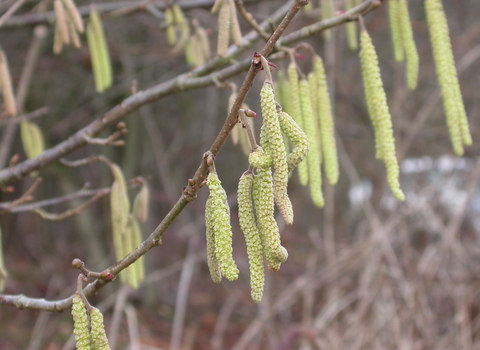
Jon Hawkins, Surrey Hills Photography

©Philip Precey
Hazel
Hazel is a small tree of woodlands, grasslands and gardens that is regularly coppiced - the practice of cutting the stems of a tree to allow new shoots to grow. It is well known for its long, yellow catkins.
Scientific name
Corylus avellanaWhen to see
January to DecemberSpecies information
Category
Statistics
Height: up to 12mCommon.
About
Hazel is a small, shrubby tree that can be found in a variety of habitats, such as woodlands, gardens and grasslands. It is famous for its long, yellow, male catkins (known as 'lamb's-tails') that appear in spring, and its green, ripening to brown, fruits (familiar to us as 'hazelnuts') that appear in late summer. These nuts are a favourite food of grey squirrels, dormice and wood mice, and some small mammals will cache their finds, storing them in burrows or old birds' nests.How to identify
Hazel has shiny, brown bark and almost circular, toothed leaves with soft hairs on their undersides. It displays long, yellow catkins in spring, and provides a crop of hazelnuts in late summer.Distribution
Widespread.Did you know?
Coppicing is the practice of cutting the stems of a tree down to the base every few years, allowing new shoots to grow and providing a crop of wood. Hazel has been coppiced for 4,000 years and the poles used for wattle (canes woven into a lattice pattern) to make fencing, hurdles and the foundation of wattle-and-daub walls for houses. Hazel is still used today for making crafts, screens and even bean poles.The Wildlife Trusts manage many woodland nature reserves sympathetically for the benefit of all kinds of wildlife. A mix of coppicing, scrub-cutting, ride maintenance and non-intervention all help woodland wildlife to thrive.
